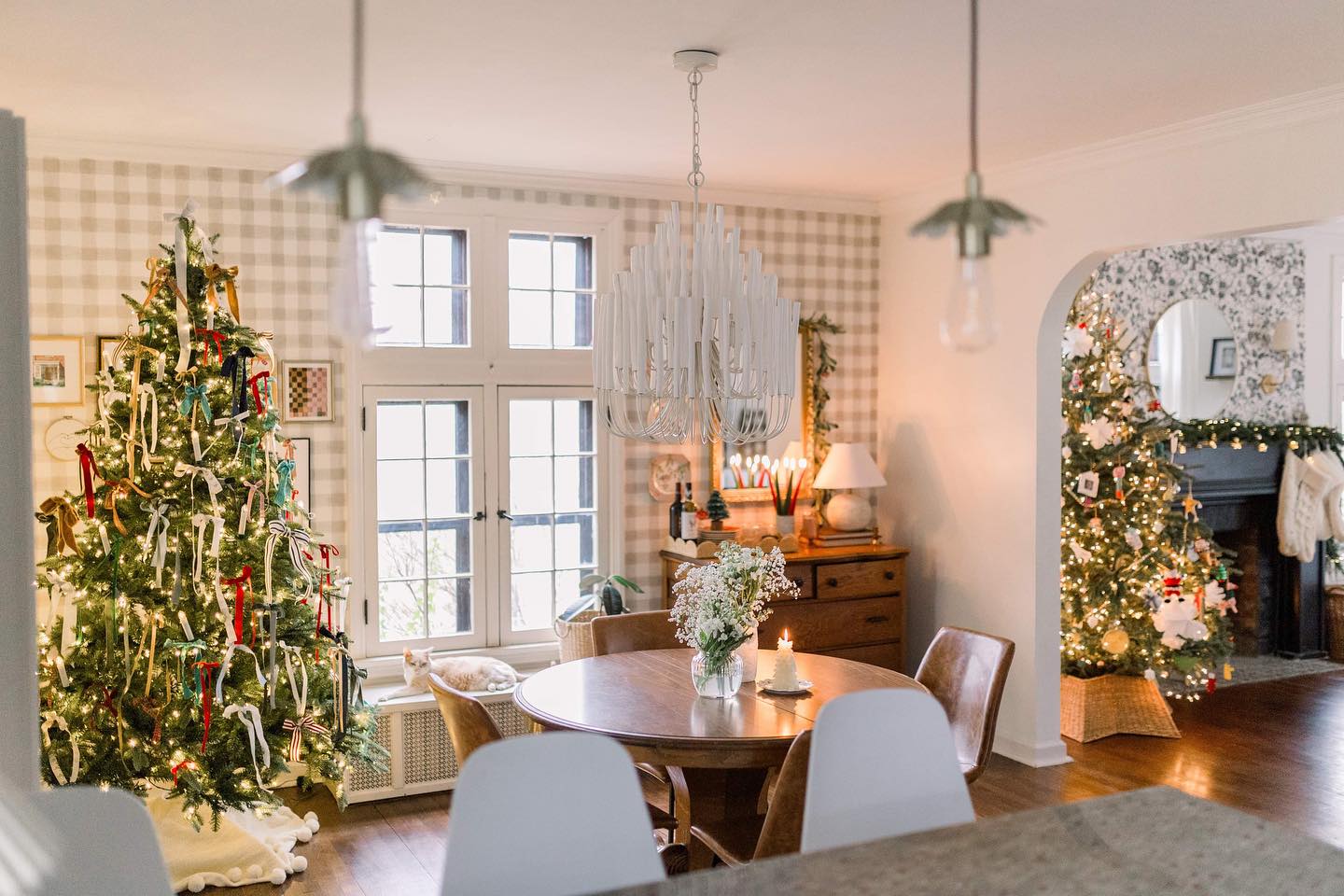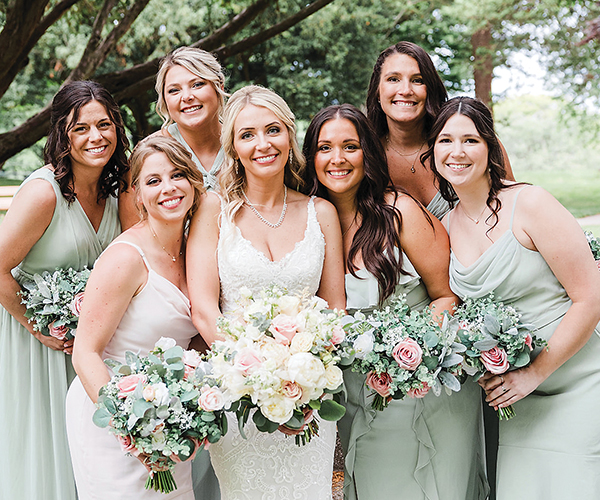Room Service
Sep. 21, 2004 | 4:00 AM
Doors can be incredibly effective home-improvement tools, especially during the hectic holiday season. Just close them and clutter, dirt and outdated decor magically disappear seconds before family and friends arrive. Unfortunately, the trick doesn't work when it comes to fixing up the spaces where you actually entertain your guests.
The good news: There's still time to do some redecorating before those nearest and dearest to you arrive for annual brunches, cocktail parties and dinners. On the following pages, we chronicle the transformation of a great room, dining room and kitchen (in each case, the unappealing decor and/or layout was inherited from a previous homeowner or builder) from mediocre — or worse — to downright marvelous.
The Great Room
When Dr. Nancy Cossler and her husband, Dr. Marty Wieczorek, moved their family from Detroit to Solon in March 1995, the husband-and-wife ob/gyns began enthusiastically decorating their new two-story, transitional-style abode in a palette of dramatic colors that reflected a strong confidence in their interior-design preferences: dark red in the living room, deep hunter green in the dining room, plum in the study.
But their progress came to a halt in the great room, an 18-by-26-foot space with a 26-foot cathedral ceiling and an enormous window dominating one wall. Stumped by its size, the couple painted the walls the same relatively tame dark taupe they used in the front hall and plunked their dark-green leather sectional in front of a color-blocked area rug — a stopgap measure that remained in place for eight years.
"It was so big I had no idea what to do with it," Cossler says of the room, the most vexing feature in a home purchased when construction on it was nearly complete. "You just really couldn't use it."
Mayfield Heights interior designer John Florian Koncar, whom Cossler and Wieczorek finally called upon for decorating guidance late last year, says the couple's struggles are as common as the great room's appearance in new-home floor plans.
"These big-volume spaces oftentimes look great in pictures and model homes," he says. "People don't understand until they actually move into them that something feels like it's missing. The cabinetry and millwork in the room isn't scaled to fill up the space. If you don't add fabric or something to soften it up, then you suffer from things like echoes. And there's usually half a dozen can lights in the ceiling that don't do anything to light the room. You get this weird spotlight thing happening from 20 feet away."
Koncar's first step in transforming the great room into a warm, inviting space that complements the rest of the house's contemporary interiors was to design a 5-foot wrought-iron chandelier loosely based on a French lantern. The fixture provided much-needed lighting and filled a portion of the vertical space. Similarly, a 7 1/2-foot mirror with a 4-inch bevel and 5-inch gilded frame was hung over the fireplace to make that fireplace appear more in proportion to the wall. An oversized sofa, love seat and chairs — most upholstered with a bouclé in the bright red that is Cossler's favorite color — were then custom-made to fill the room. Koncar says he chose the fabric because its nubby texture was visible from several feet away.
The room's most notable feature, however, is the window, which Cossler and Wieczorek had left bare, using it only as a backdrop for their Christmas tree. Koncar framed the panes with panels of oversized plaid taffeta hung on an iron rod and outfitted the area immediately in front of them for reading. A pair of armchairs separated by a bouclé-and-faux-leopard ottoman provide the perfect place to curl up with a good book, while a long, narrow table with reading lamps stationed at each end offers ample space for stacking magazines, newspapers and the like.
"You can read there under natural daylight, enjoy the yard," Koncar says. "The backs of the chairs were made especially high so you can nap in them."
While designers usually have to talk their clients into using a bright or deep color on the walls, Koncar actually had to convince Cossler to paint them white. "I wanted maximum contrast between the reds that I was using for furnishings and draperies and the walls," he explains. Cossler now concedes that Koncar was right.
"It's really hard for me to do white walls," she says, "but it looks fabulous."
The Kitchen
The 113-year-old, red-brick Federal in Ohio City that David Somrak bought in January 2003 presented a challenge all too familiar to first-time homebuyers: funding a whole-house remodeling project on a shoestring budget. And nowhere was that challenge more evident than in the kitchen, a grimy 11-by-13 room with dark wood-paneled cabinetry, orange laminate countertops, old avocado-green appliances and filthy red carpeting.
Yet the 41-year-old marketing director for Cottonwood, a Chagrin Falls furniture store, was surprisingly unfazed by the grossly outdated space he inherited from the previous owner. He prudently decided to build his sleek new kitchen around the countertops, which were still in serviceable condition.
"Orange is one of my favorite colors," he says. "It has a lot of energy to it."
Almost everything else, however, had to go (or at least look like it had been replaced) during what Cottonwood owner Dorene White refers to as a "first-string renovation": a "hit list" of inexpensive projects that produce an attractive, functional space fast.
"With a kitchen or a bathroom," she says, "you gotta get moving as quickly as possible."
One of the first tasks Somrak addressed was asking the contractor already working on the house to raise the cabinets over the new stainless-steel range approximately six inches, a move that not only better accommodated the new stainless-steel range hood but also added a measure of architectural interest. A painter was then hired to paint the walls, ceiling and cabinetry a crisp, clean white. Somrak decided to leave the doors off the overheard cabinets, a trick he'd seen in a friend's New York City apartment.
"I like to be able to see what's in the cupboards. It works as art," he says. "But you've got to be neat."
White acknowledges that Somrak could have saved some money by painting the kitchen himself. But she believes that in this instance he was wise to hire a pro. "There was a lot of work put in on those cabinets," she explains. "They had to be completely sanded, they had to be filled and they had to be primed. It's something you can do yourself, but there may be more steps than just slapping on paint."
Somrak initially planned to remove the kitchen carpet and have the original hardwood floor refinished to a dark brown, but he simply couldn't afford the unexpected cost of replacing damaged boards. White, who helped Somrak decorate the house, suggested laying a checkerboard of burnt-orange and espresso Marmoleum — a marbleized version of linoleum that complements both the countertops and the hardwood floors in neighboring rooms — when Somrak's home-improvement budget recovers from the "first-string remodeling."
Although floor space in the kitchen is limited, Somrak made the most of it by squeezing a small stainless-steel restaurant utility table and two stools under the only window for in-kitchen dining and a freestanding storage cabinet (a friend's flea-market find) next to the new stainless-steel refrigerator. Finishing touches include a gooseneck faucet for the stainless-steel sink — a little extra that makes filling and rinsing large pots easier — and clear glass pulls for the cabinet drawers and remaining doors, a nod to the old house's past.
"Even though we wanted a kitchen with a funky, modern edge to it," White says, "we also wanted to have elements of a century home."
The Dining Room
Cleveland Heights interior designer Reita Bayman doesn't mince words when she describes the condition her Gates Mills home was in when she and husband Jim, a retired electronics company executive, bought it in late 2000. The house, a European-flavored mix of traditional and contemporary architecture, was riddled with "poor choices" made by the people who built it three decades ago, from the 4-by-4-inch temporary posts that supported the front porch to the inexplicable proliferation of closets — four in all — off the first-floor hall.
"I'm certain the architect wouldn't have been a very happy camper," she declares.
The dining room alone was a study in mismatched finishes: expensive slate tile on the floor, cheap acoustical tile on the ceiling and grass cloth on the walls. Bayman was also disturbed by the fact that the dining room could be reached through the living room and kitchen but not from the hall that ran the length of the house. And she believed the lovely view of the back yard from a right angle of windows was somehow wasted on the space.
"At the age that my husband and I are, we don't really use the dining room all that much," she notes.
The couple embarked on a yearlong renovation project shortly after they bought the house. That included tearing up the slate floor (the material was subsequently used to tile the floor and shower in the master bath) and laying an ebony-stained hardwood counterpart. The offending acoustical tile was replaced by drywall crisscrossed with strips of lathing and painted white, a feature that repeats the square motif found throughout the house. Although Bayman considered wallpapering the room, she eventually opted to add texture and color by installing wood paneling wrong side up, then painting the rough surface a Wedgwood blue finished with a wash of light yellow.
After the contractors left, Bayman put her antique dining-room table, a collapsible Victorian piece that expands to 12 feet in length, and four rolled-back sea-grass chairs under a wrought-iron-and-art-glass chandelier at one end the room, near the newly created china cabinet and bar. A sitting area was created at the other end of the room by filling it with an eclectic mix of classical and Oriental furnishings, a move that makes good use of those aforementioned windows. "It's a great place to read," Bayman enthuses. The arrangement, she adds, still allows her to pull out the dining-room table when necessary.
"God forbid I ever use it at 12 feet long again," she groans. "I'd have to cook food to put on top of it!"
Trending
-
1
-
2
-
3
-
4
-
5










